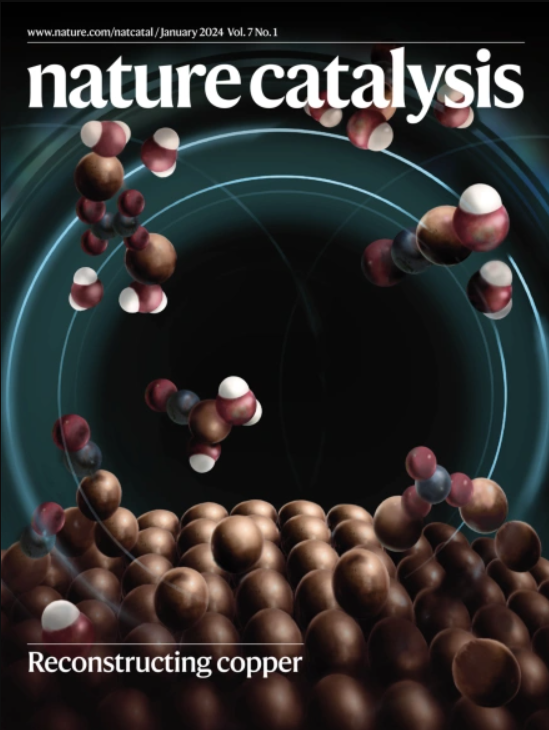Microenvironment effects in electrochemical CO2 reduction from first-principles multiscale modelling
IF 44.6
1区 化学
Q1 CHEMISTRY, PHYSICAL
引用次数: 0
Abstract
Electrochemical CO2 reduction is expected to become a key player in net-zero technologies, yet its industrial implementation is currently limited. Improvements based on fine-tuning microenvironments (that is, electrolyte environments around catalytic sites) have been scarce due to the interplay between electrode kinetics and transport. Here we couple atomistic insights with continuum transport via ab initio multiscale modelling, explicitly including electrolyte effects at all scales. The resulting model is validated on silver planar electrodes in several liquid electrolytes, and the current dependence with voltage aligns with experimental observations. We show that a balance between CO2 diffusion and cation accumulation needs to be achieved to obtain optimal rates. In ionomers, this limitation can be overcome since organic cation-based microenvironments are present at a fixed concentration, but water management becomes critical. Our approach paves the way towards rational microenvironment design in electrochemical CO2 conversion. Optimizing devices for electrochemical CO2 reduction requires a comprehensive and quantitative understanding of the microenvironments where the reactions occur. Now, a multiscale modelling approach that explicitly accounts for electrolyte effects at all scales is developed and showcased for the electroreduction of CO2 on silver.


电化学CO2还原中的微环境效应:第一原理多尺度模拟
电化学二氧化碳减排有望成为净零排放技术的关键参与者,但其工业实施目前受到限制。由于电极动力学和传输之间的相互作用,基于微调微环境(即催化位点周围的电解质环境)的改进很少。在这里,我们通过从头算多尺度模型将原子的洞察力与连续输运结合起来,明确地包括所有尺度上的电解质效应。该模型在几种液体电解质中的银平面电极上进行了验证,电流与电压的依赖关系与实验观察结果一致。我们表明,需要在CO2扩散和阳离子积累之间取得平衡,以获得最佳速率。在离聚物中,这种限制可以克服,因为有机阳离子微环境以固定浓度存在,但水管理变得至关重要。我们的方法为电化学CO2转化中合理的微环境设计铺平了道路。
本文章由计算机程序翻译,如有差异,请以英文原文为准。
求助全文
约1分钟内获得全文
求助全文
来源期刊

Nature Catalysis
Chemical Engineering-Bioengineering
CiteScore
52.10
自引率
1.10%
发文量
140
期刊介绍:
Nature Catalysis serves as a platform for researchers across chemistry and related fields, focusing on homogeneous catalysis, heterogeneous catalysis, and biocatalysts, encompassing both fundamental and applied studies. With a particular emphasis on advancing sustainable industries and processes, the journal provides comprehensive coverage of catalysis research, appealing to scientists, engineers, and researchers in academia and industry.
Maintaining the high standards of the Nature brand, Nature Catalysis boasts a dedicated team of professional editors, rigorous peer-review processes, and swift publication times, ensuring editorial independence and quality. The journal publishes work spanning heterogeneous catalysis, homogeneous catalysis, and biocatalysis, covering areas such as catalytic synthesis, mechanisms, characterization, computational studies, nanoparticle catalysis, electrocatalysis, photocatalysis, environmental catalysis, asymmetric catalysis, and various forms of organocatalysis.
 求助内容:
求助内容: 应助结果提醒方式:
应助结果提醒方式:


